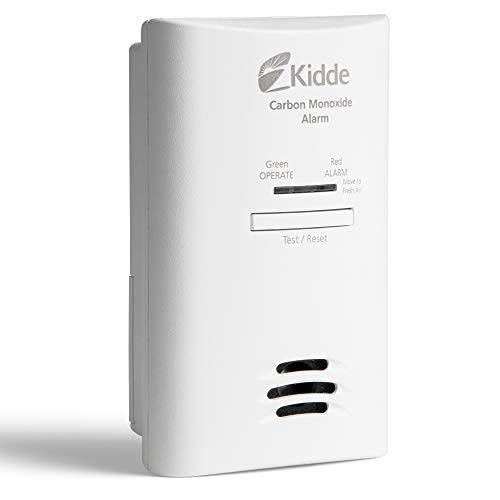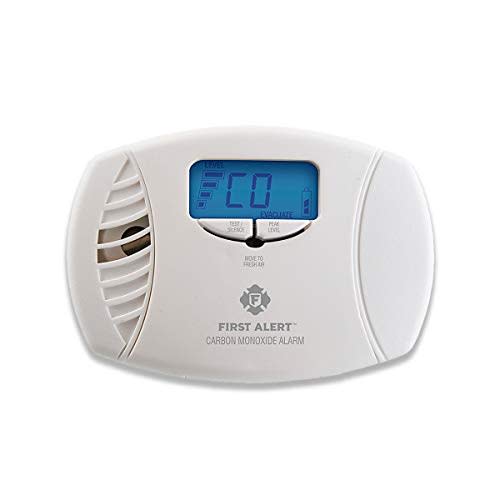Should You Travel With a Portable Carbon Monoxide Detector?
An easy safety measure—whether you're staying at a hotel, Airbnb or camping.
Planning a vacation involves all kinds of preparation. From the itinerary to the packing and accommodations, there is so much to think about. Usually, when we are planning what to bring with us we think of things like proper clothes, sunscreen, medicine and personal hygiene items. But what about a portable carbon monoxide detector? Is something like that really necessary? Oftentimes, when we travel we don't think about the dangers lurking out there like we would in our own homes.
We put carbon monoxide detectors in our homes to make us aware of any odorless leaks coming from our furnace, stove or generator. However, when staying in hotels, Airbnbs, RVs, tents, campers, etc., there could either be a lack of carbon monoxide detectors in general, or a lack of knowing if they're working or not.
Because of this, it may be wise to carry our own carbon monoxide detector. Since they plug right into an outlet (and most have battery backups as well), they provide an easy safety measure. Although it may be considered more during winter travel because of furnaces, there could also be leaks from generators in the event of power outages.
All it takes is for one random carbon monoxide leak to cause a tragedy that could be easily preventable. We'll go over the risks and probability to help you make an informed decision on whether you should travel with a carbon monoxide detector or not.
Related: BRR, It's Getting Cold! Before You Plug in Your Space Heater, Here Are the Risks You Should Consider
Here at Parade.com, we're all about sharing products we love with our audience. When you make a purchase on an item seen on this page, we may earn a commission, however, all picks are independently chosen unless otherwise mentioned.
What Is Carbon Monoxide?
Carbon monoxide is an odorless and colorless gas. It's basically invisible as you can't see it or smell it. It is produced in the home by burning gasoline or propane in a furnace or stove. The carbon monoxide can begin to build up in your home when the furnace or stove is not properly vented outside. For example, if an exhaust pipe gets plugged with a bird's nest, carbon monoxide can't escape and will start to build up inside.
How Does Carbon Monoxide Poisoning Occur?
When carbon monoxide builds up inside the home and we breathe it in, it enters our bloodstream. This means that the carbon monoxide is replacing the oxygen in our blood. That accumulation in the bloodstream causes poisoning.
Symptoms of Carbon Dioxide Poisoning
The problem with carbon dioxide poisoning is that the symptoms can also relate to the flu or other illnesses making the thought of poisoning hard to detect.
headache
dizziness
weakness
vomiting
confusion
When a person is asleep, they can die from carbon dioxide poisoning before feeling any of the symptoms.
Related: Food Poisoning Vs. the Stomach Flu—What's the Difference? Here's Everything You Need to Know
How Big Is the Risk For a Carbon Monoxide Leak While Traveling?
According to the CDC, at least 430 people die in the U.S. from accidental CO poisoning every year, and there are about 50,000 emergency room visits per year. This total includes both home and hotel poisonings.
Currently, according to the National Conference of State Legislatures (NCSL), only 14 states have a requirement for the installation of carbon monoxide detectors in hotels and motels.
Besides furnaces used to heat the hotel rooms, there are also boilers to heat a swimming pool. So although the risk of experiencing a leak is higher during winter travel, it could happen at any time with the use of boilers or generators.
Carbon Monoxide Risks While Camping
According to the Michigan Department of Community Health (MDCH), even when you're in the great outdoors, you need to protect yourself from the dangers of carbon monoxide, as it's "found in the exhaust of generators, grills and camp stoves, lanterns and other common camping equipment."
Do not ride in covered pickup truck beds.
Do not sleep in a tent or trailer with a gas or kerosene-burning space heater (unless it's permanently installed and properly vented).
Do not cook with a gas grill, charcoal grill or camp stove inside a tent or trailer (even if windows are open).
Do not use a generator too close to your campsite or anyone else's campsite
Related: Why Must Air Conditioners Be Vented Out a Window When Space Heaters Don't?
Are Carbon Monoxide Detectors Expensive?
No. The average cost for a plug-in carbon monoxide detector is just $30. With the average life of a detector being seven years, that $30 can get you through a lot of travel. If the detector ends up saving a life, it's priceless.
Here are some of the best carbon monoxide detectors available on the market right now.
Best Portable Carbon Monoxide Detectors
Kidde Carbon Monoxide Detector, $32 on Amazon
Kidde Carbon Monoxide Detector, AC Plug-In with Battery Backup, CO Alarm with Replacement Alert
Even in the event of a power outage, with two AA batteries, this portable carbon monoxide detector will continue to work. Kidde Carbon Monoxide Detector, $32 on Amazon
Kidde Nighthawk Carbon Monoxide Detector, $27.50 on Amazon
Kidde Nighthawk Carbon Monoxide Detector, AC-Plug-In with Battery Backup, Digital Display
With a 9V battery backup, you'll have peace of mind even in a power outage. Also, when CO detection is normal, a red dot appears in the lower right corner and blinks. Kidde Nighthawk Carbon Monoxide Detector, $27.50 on Amazon
First Alert CO615 Dual-Power Plug-In Carbon Monoxide Detector, $38 on Amazon
First Alert CO615 Dual-Power Plug-In Carbon Monoxide Detector with Battery Backup and Digital Display, White
Available with a seven-year warranty, you can feel confident while traveling with this detector. It has a battery backup as well. First Alert CO615 Dual-Power Plug-In Carbon Monoxide Detector, $38 on Amazon
Next Up: As a Caregiving Influencer, Here Are My Best Tech Safety Finds for Seniors—All Shoppable Now!




